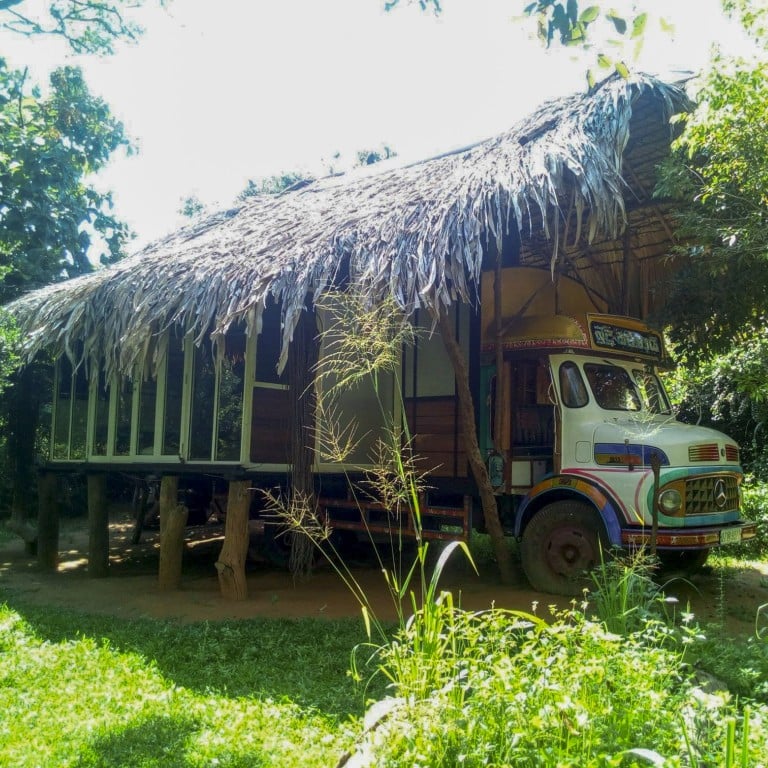
How sustainable tourism in Sri Lanka is taking off at eco-retreats as the country’s economic crisis forces a new approach
- Away from the tourist magnets on Sri Lanka’s coast, economic realities are prompting eco-retreats to pioneer sustainable tourism
- Very few places can compete with the biodiversity of Sri Lanka and small retreats and private villas allow guests to become immersed in it
A sinister two-metre-tall, horse-headed Hindu deity illuminated by the flickering flames of an open fire provides an unorthodox sense of arrival at a jungle eco-retreat in Sri Lanka’s remote southern interior.
A young woman creates hypnotic melodies on a handpan, a metal musical instrument. Toque macaques screech from branches overhanging the thatched-roof shack that serves as the guest reception zone. An enormous monitor lizard ambles past with an exaggerated swagger.
The tourism industry is struggling in Sri Lanka but you would hardly know it here, at mystical Banyan Camp.

Hong Kong’s Security Bureau still has an amber Outbound Travel Alert notice in force for Sri Lanka and although visitor numbers are now picking up, they are only about one-third of pre-pandemic levels.
With climate breakdown becoming ever more apparent, Banyan Camp offers hope for a more sustainable future, but has its roots in a previous pandemic.
“It was almost 20 years ago, when Sars popped up, that I thought of setting up a little off-grid sanctuary,” says the camp founder, Souhaine Malalgoda, who cleared an abandoned peanut farm and pioneered a sustainability agenda long before it was fashionable in Sri Lanka.
The White Lotus effect: how TV drama is influencing where we go on holiday
His sanctuary is at the end of a rough track in a jungle clearing on the southern bank of Lake Hambegamuwa, about 23km (14 miles) northeast of the town of Thanamalwila.
While life in an economic crisis is challenging for hard-pressed locals facing food shortages, import restrictions, power cuts and rampant inflation, guests at small sustainable resorts such as this one are almost immune to the impact. They also put much needed currency into the pockets of rural populations.
The only obvious security threat here are the monkeys, which sometimes take delight in stealing guests’ luggage and depositing it in the lake.
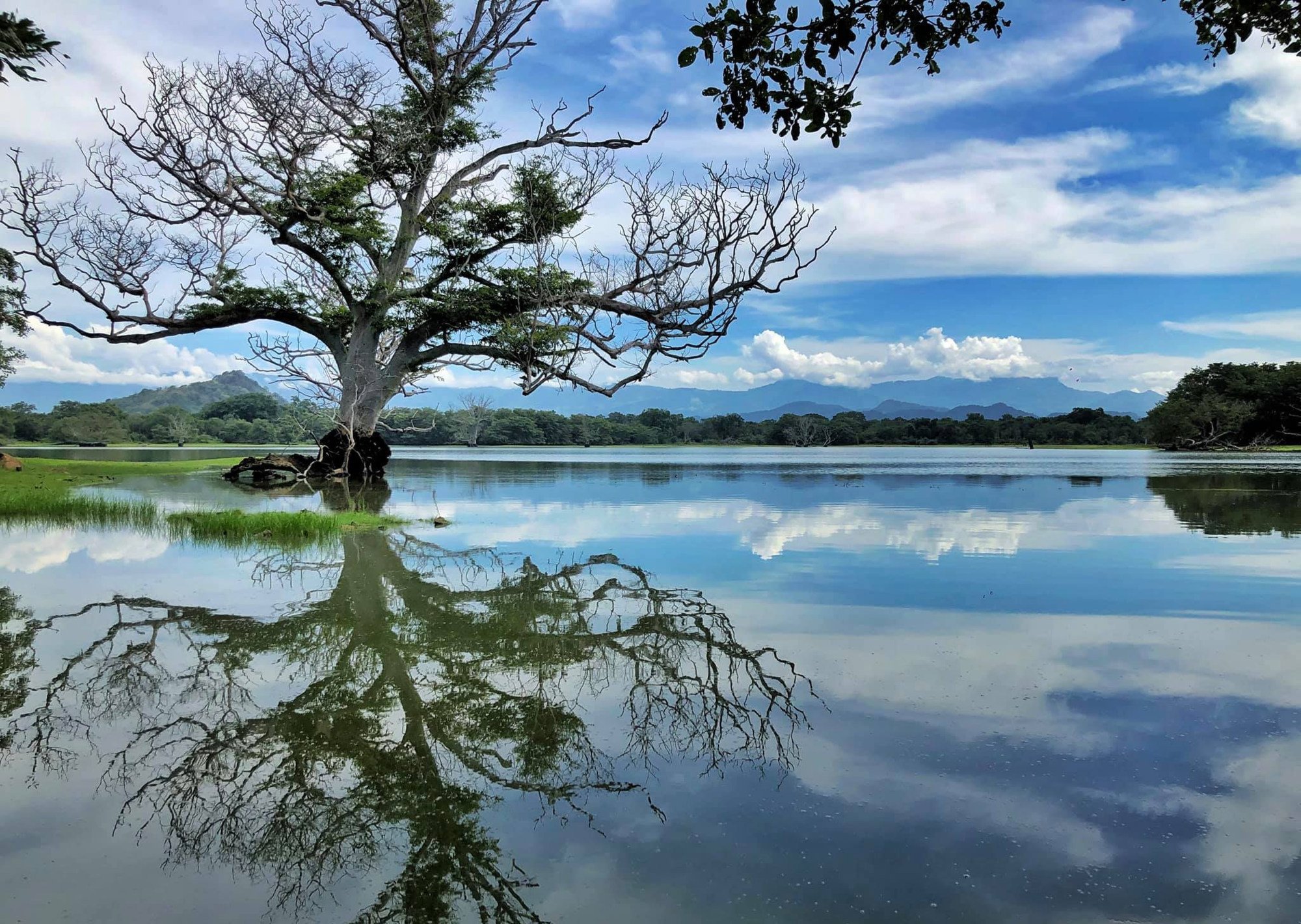
There is no need to insist on locally sourced cuisine because that’s usually all there is and, at Banyan Camp, the electricity comes from solar panels and oil lamps illuminate the resort by night. Villagers are part of the kitchen team and offer canoe safaris of the lake, which supports 42 fishing boats.
The four guest lodges are all of a recycled, upcycled and reclaimed style – mine is open-fronted, overlooks the lake and is fashioned from an antique Mercedes truck. A recycled timber and thatch lodge has been attached to the cab so it appears as if the truck is emerging from the hut.
As night descends, the deafening sound of the jungle closes in and fireflies flicker past the mosquito net, all that separates the sleeping guest from Mother Nature.
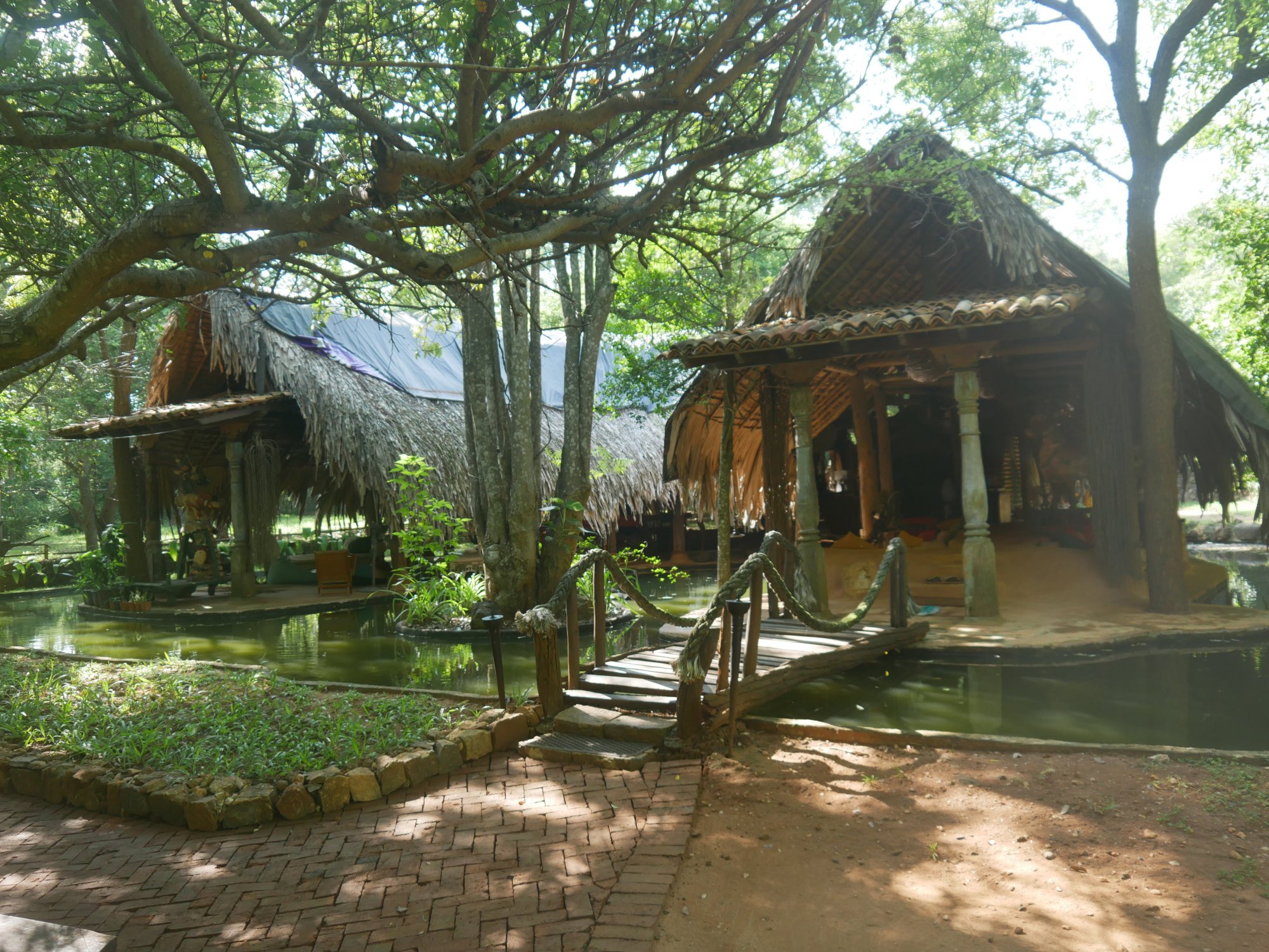
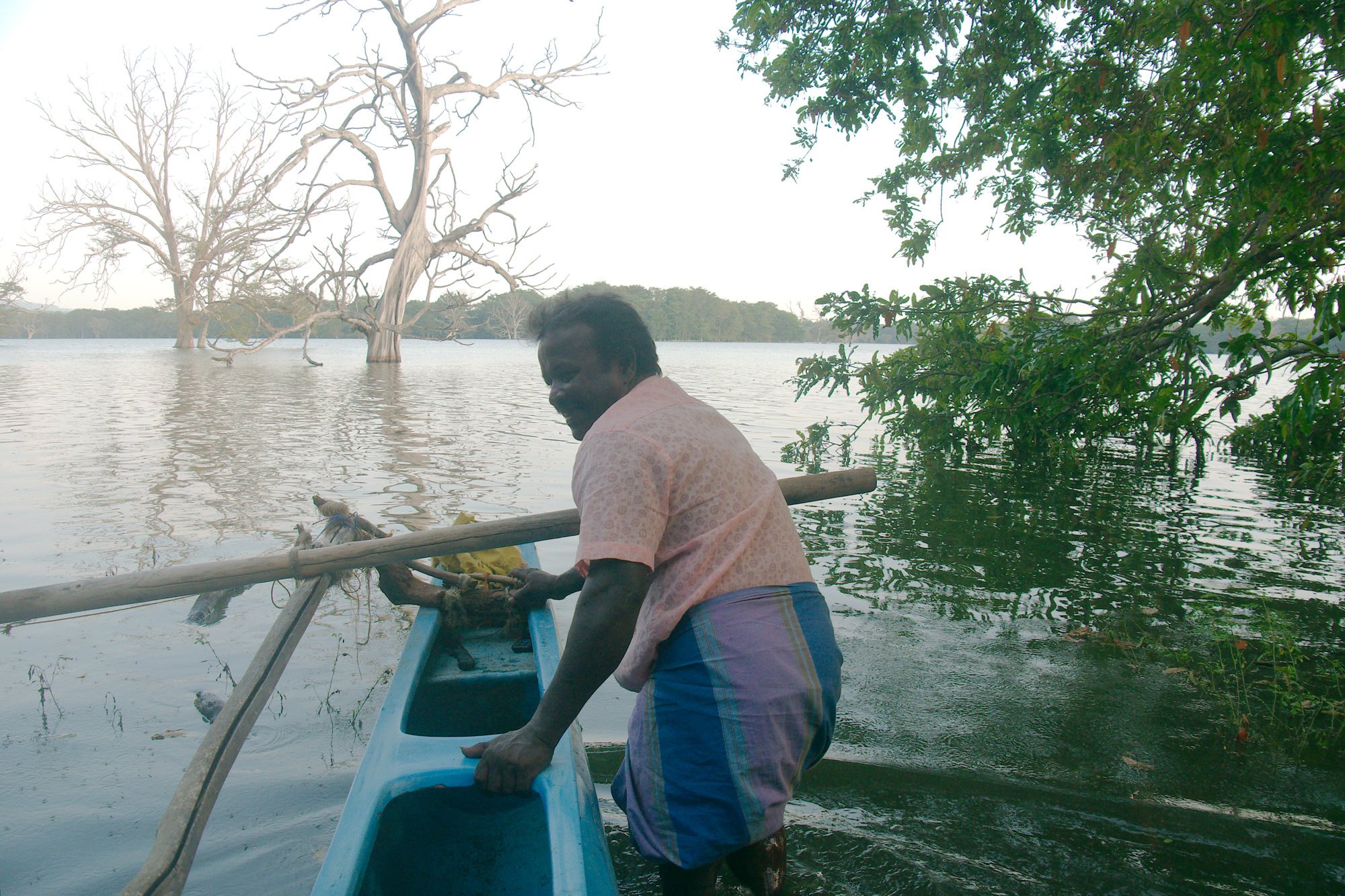
Even for those without an avid interest in ornithology, the countless exotic birds in Sri Lanka are staggering. Perched in the bare silver branches of the trees semi-submerged in the lake are cormorants, sea eagles, black and red kites, pelicans, kingfishers and egrets. More than 120 species were recorded here in 2022.
Very few places can compete with the biodiversity of Sri Lanka and small retreats and private villas allow guests to become immersed in it.
About 40km southeast of Banyan Camp is Tranquil Wild, which was the dream of nature enthusiast and professional tourist guide Eugene Bubsy Dirckze, who bought the jungle site and named it Badda, a Sinhalese word for “forest”.
Hotel loyalty programmes explained, and how to choose the best one for you
He died soon after it opened as a luxury eco-retreat in 2018 so his daughter, Ann Corea, stepped in.
With Ranawaranawa Lake shimmering in the distance, the retreat offers six luxury lodges and is only a few minutes’ drive from Lunugamwehera, part of the Yala National Park. Guests share the expansive grounds of the property with peacocks, squirrels, monkeys and lizards.
Entertainment is decidedly low-key: swimming in the pool or dozing in a hammock suspended from a mango tree as swallows swoop over the lake at sunset and the buffalo roam along its banks.

Monkeys scamper across the grounds, shaded by towering avocado and jackfruit trees, while squirrels hop from branch to branch on mango trees drooping with the weight of fruit.
Elephants sometimes migrate to the lake in the dry season, in search of water. One year they tried to barge down the perimeter fence of the resort to reach the swimming pool but were deterred by the bright garden lights.
“This might be a wildlife-friendly destination but elephants are not permitted in the pool,” says Corea, firmly.
Sarojini, the house chef, lives in the nearby village, Kirindioya, and prepares Sri Lankan food using locally sourced ingredients and traditional Ayurveda recipes.

Her take on local delicacy halape – a dense sweet treat made with kurakkan flour and caramelised coconut milk with local spices and a little sugar, all steamed inside a banana leaf – is wonderful.
Corea has to rely on earnings her husband makes in a hairdressing business in Colombo, the nation’s largest city, and says she likes to employ women wherever possible because there are few other job opportunities for them in Sri Lanka’s rural interior.
Further south, near the southern tip of Sri Lanka, is the Talalla Retreat. Its nine bamboo glamping lodges, 12 thatched villas and 32 deluxe rooms housed in small two-storey blocks are set in flat lawns studded with coconut palms.
Talalla boasts an organic vegetable garden and stands next to one of the prettiest white-sand beaches in Sri Lanka. Like most beaches in the country, this one is free of rubbish and guests are likely to have to share it only with a stray dog or two.
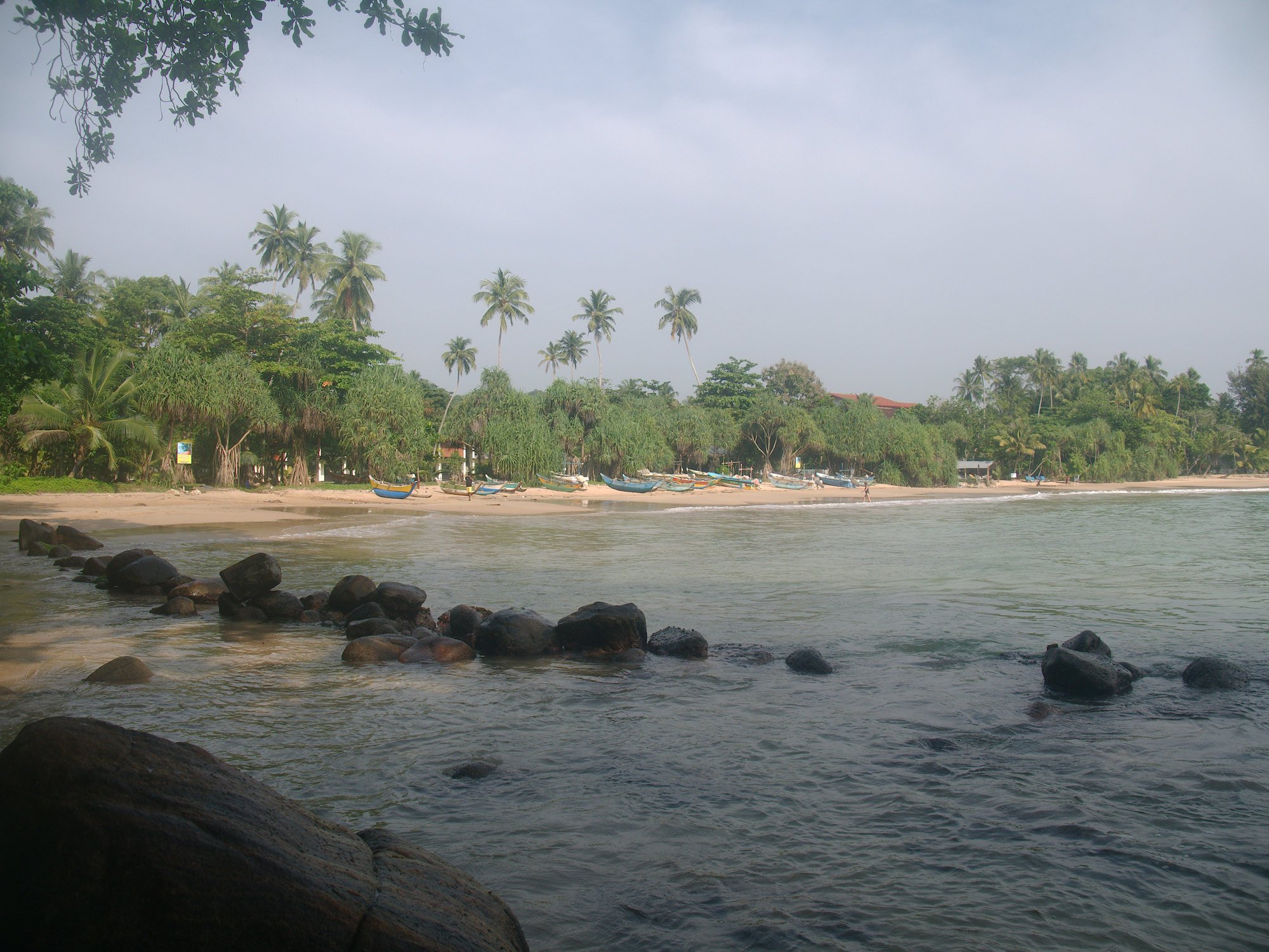
It’s not unusual to see turtles swimming or laying eggs in the sand at night, under a full moon.
Beneath a mosquito net in one of the glamping huts, guests are soothed to sleep by the interminable surge, pause and crash of the ocean on the beach.
Eco-conscious visitors can augment stays at small independent nature-friendly retreats with experiences such as jeep safaris in Yala National Park, whale-watching cruises from Mirissa – not far from Talalla – or a visit to a turtle hatchery, although a few of these attractions are of dubious repute, with some charging eager visitors to release into the sea juvenile turtles that would have achieved the quest quite successfully without intervention.
Arguably, though, one of the best (and cheapest) ways in which to witness the majesty of natural Sri Lanka is to take a train through the mountainous interior between Ella and Kandy, rumbling, lurching and rattling through green panoramas of tea plantation, jungle, small village and dramatic waterfall.

First-class seats on trains can be reserved online and rarely cost more than US$5. Doors tend to be left open for ventilation, so passengers can lean out (gripping on tightly) to feel the hot arid air on their faces.
The more energetic may prefer the new Pekoe hiking trail. This 300km, 22-stage route traverses the vast network of tea trails in the Central Highlands, between Kandy and Nuwara Eliya.
“Take [Hong Kong’s] Lantau Trail, multiply by 50 and then add 10 times the variety of landscape and terrain and you almost have the Pekoe trail,” says former Hong Kong resident Diccon Martin, who helped design the route.

It would be misleading to suggest that Sri Lanka is a magical sustainable playground full of eco-resorts and nature-friendly private villas. High-rise hotels are beginning to appear like blots on the landscape along parts of picturesque coast, ready to cater for mass tourism.
“Our eco-tourism sector is developing with more eco-friendly hotels in the more remote rural areas but it’s a limited offering at the moment,” says M. Shanthikumar, president of the Hotels Association of Sri Lanka and a director of the Tourism Development Authority. “We don’t have sufficient product.”
He explains apologetically that due to the problems associated with importing food, chefs have been retrained to prepare locally sourced Sri Lankan dishes.
More generally, Sri Lanka’s economic crisis is forcing a more sustainable approach to tourism – and it makes a visit more affordable than ever for overseas visitors.

